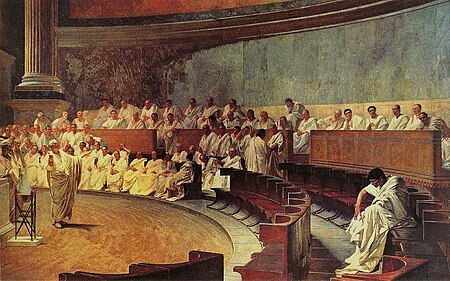Texas horned lizard
| |||||||||||||||||||||||||||||||||||||||
Read other articles:

Liu Bei Temple name烈祖 Posthumous name昭烈帝, 昭烈皇帝 dan 昭烈 BiografiKelahiran161 Zhuozhou (dinasti Han) Kematian10 Juni 223 (61/62 tahun)Baidicheng (benteng) (Shu Han) Kaisar Tiongkok Shu Han 22 September 221 – 10 Juni 223 ← Kaisar Xian dari Han – Liu Shan → KegiatanPekerjaanpanglima perang KeluargaKeluargaHouse of Liu Pasangan nikahEmpress Wu (Zhaolie) Sun Shangxiang Putri Gan (195–)Lady Mi (196–) AnakLiu Shan ( Putri Gan)Liu Yong&…

Mary Welsh HemingwayMary Welsh HemingwayLahirMary Welsh(1908-04-05)5 April 1908Walker,Minnesota, U.S.Meninggal26 November 1986(1986-11-26) (umur 78)New York City, U.S.Tempat pemakamanKetchum, Idaho, U.S.PekerjaanWartawan, PengarangSuami/istriLawrence Miller Cook (m. 1938, bercerai)Noel Monks (bercerai 1945)Ernest Hemingway (m. 1946; meninggal 1961) Mary Welsh Hem…

Millennium - Uomini che odiano le donneLisbeth Salander (Rooney Mara) in una scena del filmTitolo originaleThe Girl with the Dragon Tattoo Lingua originaleinglese Paese di produzioneStati Uniti d'America, Svezia, Regno Unito, Germania, Canada Anno2011 Durata158 min Rapporto2,40:1 Generedrammatico, thriller RegiaDavid Fincher SoggettoStieg Larsson (romanzo) SceneggiaturaSteven Zaillian ProduttoreScott Rudin, Søren Stærmose, Ole Søndberg, Ceán Chaffin Produttore esecutivoAn…

Academic degree given in music The full-dress robes of a Doctor of Music at Cambridge. The Doctor of Music degree (DMus, DM, MusD or occasionally MusDoc) is a higher doctorate awarded on the basis of a substantial portfolio of compositions and/or scholarly publications on music. Like other higher doctorates, it is granted by universities in the United Kingdom, Ireland and some Commonwealth countries. Most universities restrict candidature to their own graduates or staff, which is a reversal of t…

American judge (born 1976) Julius N. RichardsonRichardson in 2022Judge of the United States Court of Appeals for the Fourth CircuitIncumbentAssumed office August 20, 2018Appointed byDonald TrumpPreceded byDennis Shedd Personal detailsBorn (1976-10-26) October 26, 1976 (age 47)Columbia, South Carolina, U.S.Political partyRepublicanRelativesJulius B. Ness (grandfather)EducationVanderbilt University (BS)University of Chicago (JD) Julius Ness Jay Richardson (born October 26, 1976) is an Ame…

Державний комітет телебачення і радіомовлення України (Держкомтелерадіо) Приміщення комітетуЗагальна інформаціяКраїна УкраїнаДата створення 2003Керівне відомство Кабінет Міністрів УкраїниРічний бюджет 1 964 898 500 ₴[1]Голова Олег НаливайкоПідвідомчі орг�…

提示:此条目页的主题不是中華人民共和國最高領導人。 中华人民共和国 中华人民共和国政府与政治系列条目 执政党 中国共产党 党章、党旗党徽 主要负责人、领导核心 领导集体、民主集中制 意识形态、组织 以习近平同志为核心的党中央 两个维护、两个确立 全国代表大会 (二十大) 中央委员会 (二十届) 总书记:习近平 中央政治局 常务委员会 中央书记处 中�…

American academic (1921–2005) Part of a series onRhetoric History Ancient Greece Asianism Atticism Attic orators Calliope Sophists Ancient India Ancient Rome The age of Cicero Second Sophistic Middle Ages Byzantine rhetoric Trivium Renaissance Studia humanitatis Modern period Concepts Captatio benevolentiae Chironomia Decorum Delectare Docere Device Eloquence Eloquentia perfecta Eunoia Enthymeme Facilitas Fallacy Informal Figure of speech Scheme Trope Five canons Inventio Dispositio Elocutio M…

American cycling team Team Novo NordiskTeam informationUCI codeTNNRegisteredUnited StatesFounded2008 (2008)Discipline(s)RoadStatusUCI ProTeamBicyclesArgon18ComponentsShimanoWebsiteTeam home pageKey personnelGeneral managerVassili DavidenkoTeam name history2008–201020112011–20122013–Team Type 1 (TT1)Team Type 1–Sanofi Aventis (TT1)Team Type 1–Sanofi (TT1)Team Novo Nordisk (TNN) Team Novo Nordisk jerseyJersey Current season Team Novo Nordisk (UCI team code: TNN) is an all-diabetic p…

Bifor FC PapuaNama lengkapBifor Futsal Club PapuaBerdiri2014; 10 tahun lalu (2014)StadionKota Jayapura, IndonesiaKetua umumGustav Robby Urbinas[1]PelatihTheo Balubun[2]LigaLiga Futsal Profesional Indonesia2019Ke-7, Grup A (degradasi) Bifor Futsal Club Papua adalah klub futsal Indonesia yang saat ini berkompetisi di Liga Futsal Nusantara. Tim ini bermarkas di Kota Jayapura, Papua.[3][4] Prestasi Liga Futsal Nusantara Juara (1): 2018[5] Referensi ^ Bifo…

Egyptian footballer (born 1991) Mahmoud Alaa Mahmoud Alaa with Zamalek in 2018Personal informationFull name Mahmoud Alaa Eldin Mahmoud Ibrahim[1]Date of birth (1991-01-28) 28 January 1991 (age 33)Place of birth Alexandria, EgyptHeight 1.89 m (6 ft 2 in)[2]Position(s) DefenderTeam informationCurrent team ZamalekNumber 20Senior career*Years Team Apps (Gls)2011–2015 Haras El Hodoud 84 (2)2015–2017 Wadi Degla 54 (10)2017– Zamalek 119 (31)2022–2023 → Al I…

Ruby AlamsyahS.T, M.T.I.Lahir23 November 1974 (umur 49)Padang, Sumatera BaratKebangsaanIndonesiaPekerjaanFounder, CEO & Chief Digital Forensic PT Digital Forensic Indonesia (DFI)Dikenal atasAhli digital forensikSuami/istriDesy Asih MadiriniAnak2 Ruby Zukri Alamsyah, S.T., M.T.I. (lahir 23 November 1974) adalah seorang ahli digital forensik Indonesia.[1] Ia sering menjadi saksi ahli di persidangan dan juga sebagai pelatih keamanan informasi. Saat ini Ruby salah satu orang Indones…

Election 1854 Massachusetts gubernatorial election ← 1853 November 15, 1854 (1854-11-15) 1855 → Nominee Henry J. Gardner Emory Washburn Henry W. Bishop Party Know Nothing Whig Democratic Popular vote 81,503 27,279 13,742 Percentage 62.58% 20.94% 10.55% County resultsGardner: 40–50% 50–60% 60–70%Washburn: 40–50% Governor b…

弗兰克-彼得·勒奇出生1964年4月19日 (60歲)居斯特罗 職業冬季两项运动员、體育評述員 政党德国统一社会党 弗兰克-彼得·勒奇(德語:Frank-Peter Roetsch,1964年4月19日—),德国男子冬季两项运动员。他曾代表德国参加1984年、1988年和1992年冬季奥林匹克运动会冬季两项比赛,获得二枚金牌和一枚银牌。[1] 参考资料 ^ Frank-Peter ROETSCH. International Olympic Committee…

1958 studio album by Carl SmithLet's Live a LittleStudio album by Carl SmithReleased1958GenreCountryLabelColumbia Records Let's Live a Little is a studio album by country music singer Carl Smith. It was released in 1958 by Columbia Records (catalog no. CL-1172). In Billboard magazine's annual poll of country and western disc jockeys, it was ranked No. 14 among the Favorite Country Music LPs of 1958.[1] AllMusic gave the album a rating of four stars.[2] Track listing Side …
The 2008 Ironman 70.3 World Championship was a triathlon competition held in Clearwater, Florida on November 8, 2008. The race was sponsored by Foster Grant and organized by the World Triathlon Corporation. The championship race is the culmination of the Ironman 70.3 series of events that took place from October 2007 to September 2008. Athletes, both professional and amateur, earn a spot in the championship race by qualifying in races throughout the 70.3 series.[1] The 2008 championship …

Paul Ince Informasi pribadiNama lengkap Paul Emerson Carlyle InceTanggal lahir 21 Oktober 1967 (umur 56)Tempat lahir Ilford, InggrisTinggi 5 ft 10 in (1,78 m)Posisi bermain Gelandang (pensiun)Informasi klubKlub saat ini Reading (manager)Karier junior1982–1984 West Ham UnitedKarier senior*Tahun Tim Tampil (Gol) 1984–19891989–19951995–19971997–19991999–20022002–200620062007 West Ham UnitedManchester UnitedInter MilanLiverpoolMiddlesbroughWolverhampton WanderersSwi…

Dog breedKombaiKombai maleOriginTamil Nadu, IndiaTraitsHeight ≈ 58 cm (23 in) Males 22 to 24inch Females 20 to 23inchWeight Males 25kg to 35kg Females 23kg to 32kgCoat double coat both are shortColour dark red and Tan with black mask faceLitter size 4 - 8Life span 12-15yearsKennel club standardsKennel Club of India standardDog (domestic dog) The Kombai or Polygar dog is a breed of working dog native to Tamil Nadu in Southern India.[1] Traditionally kept for guarding…

Port town in County Down, Northern Ireland This article needs additional citations for verification. Please help improve this article by adding citations to reliable sources. Unsourced material may be challenged and removed.Find sources: Warrenpoint – news · newspapers · books · scholar · JSTOR (July 2016) (Learn how and when to remove this message) Town in Northern IrelandWarrenpointIrish: An Pointe[1] / Pointe an Bháirínigh[2]TownClock…

14th-century BCE Mediterranean shipwreck Uluburun Late Bronze Age ShipwreckUluburun is Turkish for Grand CapeWooden model of the ship's reconstructionSite of the wreck 50 m (160 ft) off the eastern shore of Uluburun, and 6 mi (9.7 km) to the southeast of Kaş, TurkeyLocationUneven slope of the headland's shelf, 44 m (144 ft) to 52 m (171 ft) deep, with artifacts down to 61 m (200 ft)RegionBay of Antalya, off the Turquoise Coast.Coordinates36°7�…






